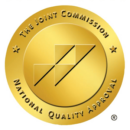After treatment has been completed, not everyone has a safe and supportive environment to return to as they continue their sobriety journey. Some people may have lost their homes either as a result of their addiction or while they were in treatment. For others, their homes may not be a safe place to be for one reason or another.
Regardless of the reason, for those in need of somewhere to live while navigating the start of their new sober life, transitional homes are available. The two most common transitional homes are sober living homes and halfway houses.
While the two share many similarities there are also important differences to know when it comes to deciding which type of transitional home is best for you and your needs. At Discovery Institute in Marlboro, New Jersey, we provide a continuum of care and aftercare options for people still wanting assistance after they complete treatment to prevent relapse.
In this blog, we’ll take a look at what is a halfway house, what are sober living homes, and the differences and similarities when it comes to a halfway house vs sober living homes.
Transitional Housing
 Transitional housing is a temporary, yet supportive living environment designed for those in need of housing after completing inpatient treatment. Transitional housing provides structure, supervision, support, and valuable life skills needed to successfully transition back into daily life as a newly sober person.
Transitional housing is a temporary, yet supportive living environment designed for those in need of housing after completing inpatient treatment. Transitional housing provides structure, supervision, support, and valuable life skills needed to successfully transition back into daily life as a newly sober person.
The two most common types of transitional housing for those in recovery are sober living facilities and halfway houses.
A halfway house is a type of temporary transitional living environment designed to support those in recovery who need housing. Halfway houses typically provide a structured and supervised environment for individuals who have completed a primary treatment program, such as inpatient rehab or detoxification while also providing a safe and supportive space for residents to continue their recovery process while they make the transition back into their daily lives.
Halfway houses are often the preferred transitional living option for those leaving correctional facilities as well. Oftentimes, halfway houses will be staffed with social workers as well as others who can help with the transition process from prison as well as help meet any requirements as part of the person’s release.
The other main type of transitional housing is a sober living facility. Also known as sober living homes, these facilities are set up much like traditional housing. Sober living homes typically offer more freedom than halfway houses, allowing residents to go about life in a relatively normal way.
Those living in sober living homes will go to work, go to their therapy and doctor’s appointments, and get themselves acclimated to their new, sober world.
Sober living homes are either run privately or as a part of a continuum of care from an addiction treatment provider.
Sober and Halfway Houses: Key Similarities
Even though sober living homes and halfway houses may be designed for different demographics, the two types of transitional homes share many key similarities.
These similarities include:
- Sobriety – To live in either a halfway house or a sober living facility, you must maintain your sobriety at all times. Many transitional homes have specific rules in place when it comes to drug and alcohol use and some even ban certain household products because they have alcohol in them.
- Peer Support – Peer support is a major component of transitional living regardless of if it is a halfway house or sober living home. Many transitional housing facilities offer support group meetings at their facility and many require active participation in support group meetings as a requirement for residence.
- Accountability – Both halfway houses and sober living houses establish rules and guidelines to promote accountability among residents. These rules often include attending support meetings, participating in household chores, and adhering to curfew requirements.
Sober and Halfway Houses: Key Differences
While both sober living homes and halfway houses have many similarities there are also some important key differences to keep in mind when considering the best transitional home for you and your needs.
Some of these key differences include:
- Structure – Halfway houses tend to have a higher level of structure, often implementing a more regimented schedule with specific rules and expectations. Sober living houses offer a more flexible environment, allowing residents to gradually transition into more independent living.
- Length of Stay – Halfway houses typically have a set duration of stay, ranging from a few months to a year. Sober living houses, on the other hand, often offer an extended stay, allowing residents to reside for an indefinite period as long as they maintain sobriety and adhere to house rules.
- Professional Staffing – Halfway houses often have treatment professionals on staff, including counselors and case managers, who provide guidance and support to residents. Sober living houses usually have less professional staff involvement, with residents relying more on peer accountability and support.
Benefits of Halfway Houses
Halfway houses have many unique benefits, especially for those that had been previously incarcerated for drug and/or alcohol-related charges.
Some of the biggest benefits of Halfway houses include:
Trying to navigate life as a newly sober person can be scary and overwhelming. Especially if you don’t have friends or family members to lean on. Halfway houses provide a supportive environment where residents can continue their recovery journey with the guidance of professionals and peers. This is particularly beneficial to those who may be making the transition from jail or a correctional facility.
Additionally, halfway houses assist individuals in transitioning back into society by helping them find employment, develop life skills, and establish a support network.
Accountability is a major part of the overall recovery process. Part of what is taught during treatment is to take responsibility for your actions and that you, and you alone, control your actions, behaviors, and the consequences that come with them.
The rules and regulations that come with living at a halfway house promote accountability and responsibility, helping residents develop essential life skills that are necessary for independent living.
Benefits of Sober Living
For those that may not need as much structure, sober living homes may be the best option for you. Sober living houses allow residents to gradually adjust to independent living while still benefiting from a supportive community. This flexibility helps individuals regain control of their lives at their own pace, allowing them to get re-acclimated to living out in the real world in a way that doesn’t feel overwhelming.
Some of the other benefits of residing at a sober living facility include:
The extended stay offered by sober living houses allows residents to build a strong foundation in their recovery and develop healthy coping mechanisms before transitioning to completely independent living. Many sober living facilities either offer support group meetings on-site or require regular attendance at one within the community.
At sober living facilities, residents often hold each other accountable for not just maintaining their sobriety but also following all house rules. This type of peer support encourages personal growth, and a sense of community, and is another way to help prepare everyone for independent living.
What are the Key Rules of Living in Halfway Houses vs Sober Living Homes?

While many of the rules in both a sober living home and a halfway house are the same, such as maintained sobriety, some rules are unique and specific to each type of facility.
Below are some common found at many halfway houses and sober living homes:
- Compliance with house guidelines, which may include a curfew and visitor restrictions
- Active participation in recovery-related activities, such as attending support meetings
- Completion of assigned chores and responsibilities
- Random drug and alcohol screening
- Respect for fellow residents and the property
How Case Management Helps in Transitional and Halfway Housing
In both halfway houses and sober living houses, case management plays a vital role in supporting residents’ recovery journeys. Case managers offer individualized guidance and support, helping residents access resources, set goals, and develop a relapse prevention plan. They also typically assist when needed in helping residents find employment and housing.
Even once transitional housing residents move on to their new, independent residences, case managers may continue to work with their clients, helping to keep track of their client’s overall health and stability as they make the transition to living on their own again.
Experience Long-term Recovery at Discovery Institute
At Discovery Institute, we understand the importance of transitional housing in the recovery process. That’s why, in addition to our detox and residential treatment programs, we also offer assistance in finding suitable transitional housing, such as sober homes, to fit you and your unique needs.
To learn more about our addiction recovery programs, and to find out how we can get you or a loved one started on the road to recovery, contact us today.
Dr. Joseph Ranieri D.O. earned his BS in Pharmacy at Temple University School of Pharmacy in 1981 and His Doctorate Degree in Osteopathic Medicine at the Philadelphia College of Osteopathic Medicine in 1991. He is Board Certified by the American Board of Family Medicine and a Diplomate of the American Board of Preventive Medicine Addiction Certification. Dr. Ranieri has lectured extensively to physicians, nurses, counselors and laypeople about the Disease of Addiction throughout New Jersey and Pennsylvania since 2012.



